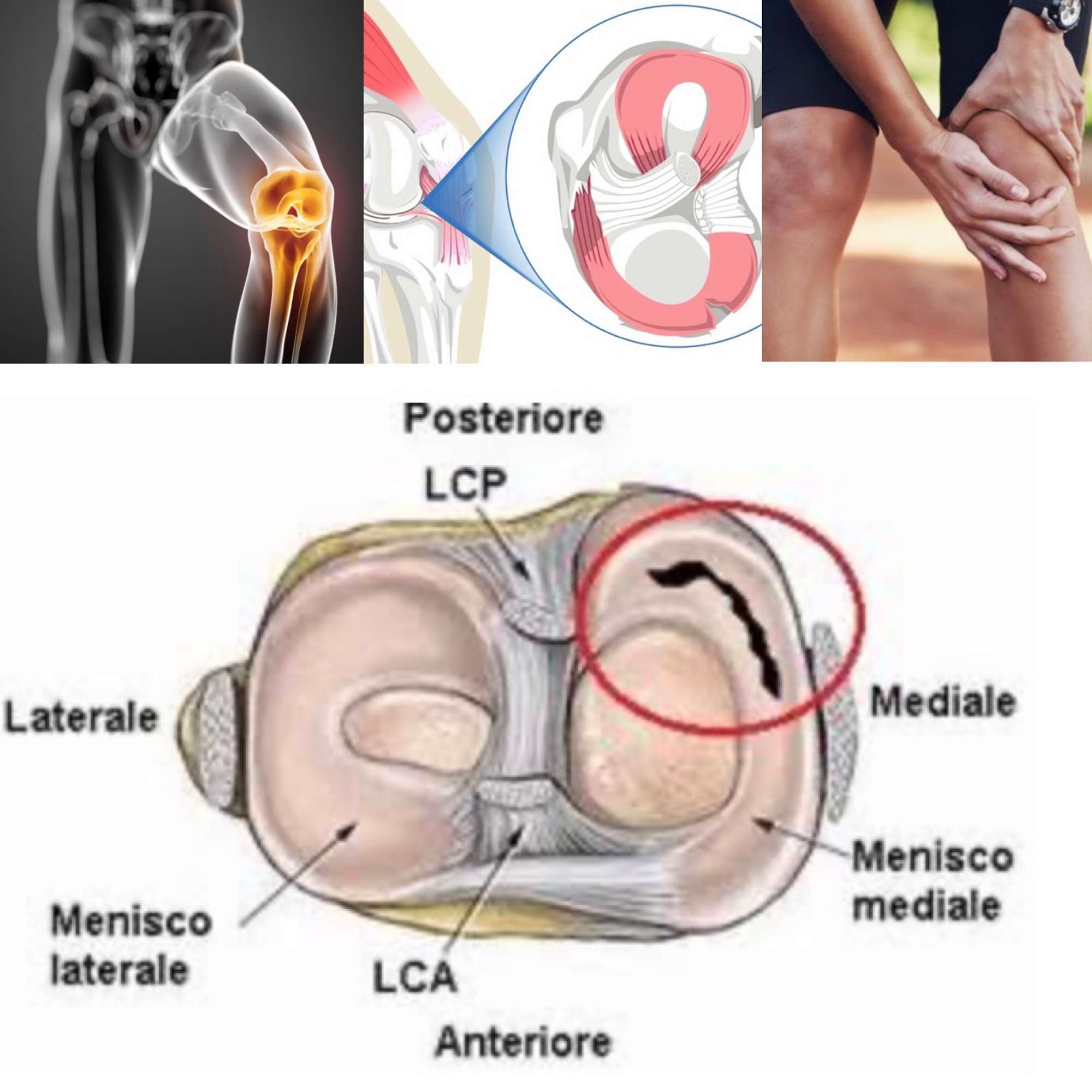Meniscal Tear

What is Meniscal Tear?
The meniscus is a cartilage disc that cushions your knee. Each of your knees has 2 menisci (plural of meniscus); one on the inner (medial) part of the knee, and the other on the outer (lateral) part of the knee. Together, they act to absorb shock and stabilize the knee joint.
Meniscal tears can be classified in 2 ways: acute or degenerative. An acute meniscal tear typically is caused by twisting or turning quickly on a bent knee, often with the foot planted on the ground. This mechanism of injury often produces related injuries, such as an ACL tear. Degenerative meniscal tears occur over time, due to repetitive stress being put on the knee, such as in a job or sport that requires a lot of squatting.
How Does it Feel?
When you tear the meniscus, you might experience:
A sharp, intense pain in the knee area
A "pop" or a tearing sensation in the knee area (acute injury)
Swelling within the first 24 hours of injury
Difficulty walking or going up or down stairs because of pain or a "catching or locking" sensation in the knee
Difficulty straightening or bending the knee fully
How Is It Diagnosed?
Your massage therapist will:
Conduct a thorough evaluation that includes a detailed review of your injury, symptoms, and health history.
Perform special tests to measure the range of motion (amount of movement) in your knee and determine which specific movements and positions increase your symptoms.
Use a series of tests that apply pressure to the meniscus to determine whether it appears to be damaged.
The results of these tests may indicate the need for further diagnostic tests such as magnetic resonance imaging (MRI) or a referral to an orthopedic surgeon for consultation.
How Can a Massage Therapist Help?
Meniscal tears can often be managed without surgery. A short course of treatment provided by a massage therapist can help determine whether your knee will recover without surgery. Your massage therapist can help control pain and swelling in the knee area and work with you to restore full strength and mobility to your knee. Your treatment may include:
1)Manual therapy
Your massage therapist will apply manual therapy hands-on treatment that may include massage, stretching, or joint mobilization to help reduce swelling and stiffness, and restore muscle function around the knee.
2)Icing
Your massage therapist will apply ice packs to the knee to help control any pain and swelling, and may instruct you to apply icing at home. Swelling is an important "guide" during your rehabilitation and can indicate your level of ability and recovery. If you experience an increase in swelling, your massage therapist will modify your treatment program or activity level to ensure your safest, most effective recovery.
3)Compression
Your massage therapist may recommend the use of compression bandages, stockings, or pumps to assist in the reduction of or prevent further accumulation of edema (swelling). Your massage therapist may include them as part of your regular treatments and teach you and your family how to use them at home.
4)Assistive devices
It may be necessary to use assistive devices such as crutches, a cane, or a walker in the short term. Your massage therapist will make recommendations about which device is best for you and will instruct you in how to use it properly.
5)Strengthening exercises
Your massage therapist will design exercises to build and maintain your strength during recovery and help restore full movement to the knee. You will be given a home program of exercises that are specific to your condition. Strengthening the muscles around the knee and throughout the leg helps ease pressure on the healing knee tissue.
6)Fitness counseling
As you recover, your massage therapist will advise you on ways to improve and maintain your fitness and activity levels, and will help you decide when you are ready to return to full activity.
If Surgery Is Required
Patients with more serious meniscal tears, or those who dont respond to a course of physical or manual therapy, may need surgery to repair the injured knee. Surgically removing the torn cartilage (a procedure called a meniscectomy) usually is a simple procedure that requires a course of physical therapy treatment following surgery. Many people are able to return to their previous level of activity, including sports, after approximately 4 months of treatment.
Meniscus removal
Following a simple meniscectomy, your rehabilitation will likely be similar to that for nonsurgical meniscal injuries. Your massage therapist may use ice and compression to control pain and swelling and will show you how to use these treatments at home. The focus of your treatment will be on helping you get back your strength and movement through a series of exercises performed in the clinic and at home, as well as with hands-on treatment (manual therapy). Initially, it is likely that you will need to use crutches or a cane for walking. Your massage therapist will help guide you in gradually placing your weight on the knee to stand or walk, to allow the meniscus and other tissue in the knee joint to slowly adjust to increased pressure.
Meniscus repair
Sometimes your surgeon will decide that the torn meniscus can be repaired instead of removed. Research studies show that if a meniscal repair is possible, it can reduce the risk of arthritis developing later in life. Rehabilitation following a meniscal repair is slower and more extensive than with meniscal removal because the repaired tissue must be protected while it is healing. The type of surgical technique performed, the extent of your injury, and the preferences of the surgeon often determine how quickly you will be able to put weight on your leg, stop using crutches, and return to your previous activities.
Following surgery for meniscal repair, your massage therapist will:
Help you control pain and swelling
Guide you through progressive reloading of weight to the knee to allow the cartilage to slowly adjust to increased compressive stress and pressure
Help restore your knee and leg range of motion
Teach you exercises to help restore your muscle strength
Return to Activity
Whether your torn meniscus recovered on its own or required surgery, your massage therapist will play an important role in helping you return to your previous activities. Your massage therapist will help you learn to walk without favoring the leg and perform activities like going up and down stairs with ease.
Return to work
If you have a physically demanding job or lifestyle, your massage therapist can help you return to these activities and improve how you perform them.
Return to sport
If you are an athlete, you may need a more extensive course of rehabilitation. Your massage therapist will help you fully restore your strength, endurance, flexibility, and coordination to help maximize your return to sports and prevent reinjury. Return to sport varies greatly from one person to the next and depends on the extent of the injury, the specific surgical procedure, the preference of the surgeon, and the type of sport. Your massage therapist will consider these factors when designing and adjusting your rehabilitation program, and will work closely with your surgeon to help decide when it is safe for you to return to sports and other activities.






